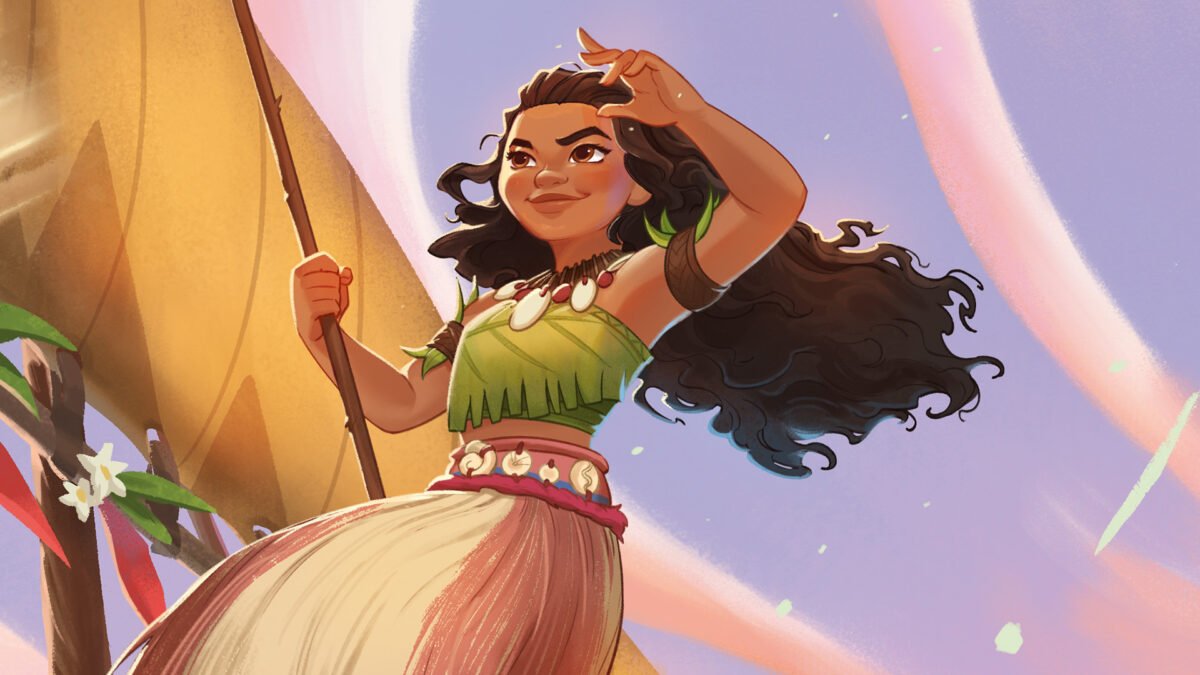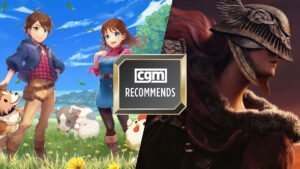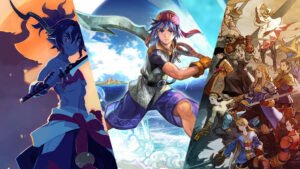In just a few weeks Into the Inklands, the third set of Ravensburger’s Disney Lorcana TCG is about to take established players, newcomers, and general Disney fans alike to new, imaginative horizons.
The trading card game scene can seem impenetrable with the titans of Magic: The Gathering and Pokémon dominating the landscape, but Ravensburger broke through last year against the odds (and an unfortunate shortage of product). Maintaining momentum to keep early fans hooked while keeping the game accessible for later adopters is key for any expanding tabletop game—and fortunately, after the opportunity to preview its two starter decks, it seems like Into the Inklands will help the fledgling TCG make good on its potential.
Disney Lorcana: The Story So Far

For the uninitiated, the “story” of Disney Lorcana puts players in the role of Lumineers, imaginative storytellers called to a magical realm called Lorcana. In service of the Great Illuminary, a repository of stories, players use “magical ink” to summon iterations of beloved Disney characters or items and challenge other Lumineers. The goal is to obtain “lore” points, thereby recovering pieces of the Great Illuminary’s scattered annals.
Or, to put it in straight gameplay terms, you need to score 20 lore points to best your opponent and win—generally by “questing” with summoned characters.
The Disney characters summoned into existence by players come in three varieties: Storyborn, or those lifted almost verbatim off the pages of their original stories; Dreamborn, extrapolations or powered-up versions of those characters; or Floodborn, like What If?-style multiverse variants of those characters, where Gaston can be a brilliant inventor or Belle a daring rogue.
Lorcana’s debut, The First Chapter, laid this all out like a thesis statement, and Rise of the Floodborn extrapolated upon it with a wider array of Floodborn characters. In that last set’s story, a flood of magical ink scattered lore around the realm of Lorcana, mixing its colours in the process and creating new Floodborn variants. Now the stage is set for Into the Inklands to expand the game with some new mechanics, including a new card type and even more characters from even more properties.
Into the Inklands: New Mechanics & Settings
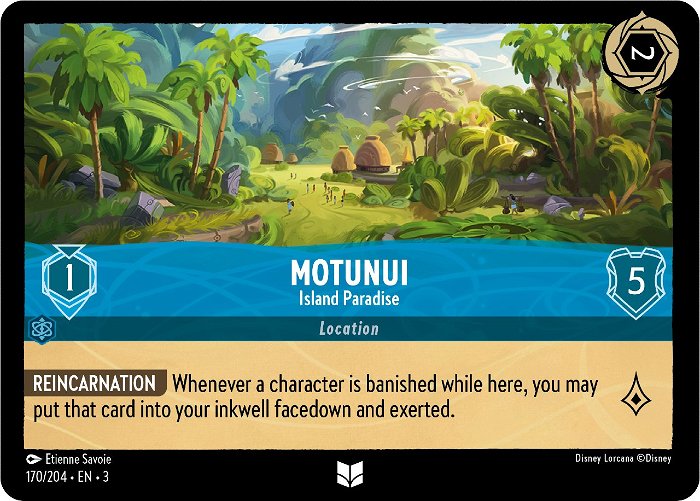
The biggest addition to Disney Lorcana in Into the Inklands is a new card type, Locations. These landscape cards are cast like any other and take a new spot on the playing field, granting their owner lore at the start of each of their turns. Opposing players can then challenge that location on their turns in the same way they challenge characters, except that the location can’t deal damage back. Once a location has taken enough damage, it’s banished.
Players can move an active character to a location for its move cost; depending on the location and character, this can have certain benefits, like the Reincarnation ability on “Motunui, Island Paradise,” which allows characters who are banished from that location to go to their player’s inkwell instead of the discard pile. “Maui’s Place Of Exile, Hidden Island” grants characters on it Resist +1, decreasing damage dealt to them, while once per turn, “Peter Pan, Lost Boy Leader” can gain lore equal to a location’s lore value if he moves to it.
In terms of the characters featured in Into The Inklands, Disney Lorcana‘s third set brings a healthy dose of 90s nostalgia with characters from 101 Dalmatians, TaleSpin, and Treasure Planet. They’re rounded out by many characters from Moana and Duck Tales (and/or its more recent revival)—although only about half of the set has been revealed at this time.
Into the Inklands: Starter Decks

Into The Inklands‘ pair of Starter Decks comes in two colour combinations that haven’t yet been covered by these preconstructed products: Amber/Emerald, and Ruby/Sapphire (kind of like the Pokémon, except not).
The Ruby and Sapphire deck puts the heroes of Motunui in cahoots with Scrooge McDuck and his wily nephews. “Moana, Born Leader” keeps other characters on locations at the ready, while you’ll feel quite buffed if you can get Huey, Dewey, and Louie on the board and questing at the same time.
Meanwhile, the Amber and Emerald deck goes to the dogs. With a heavy focus on the 101 Dalmatians, this premade deck shows off the card “Dalmation Puppy, Tail Wagger,” a unique card of which you can have up to 99 copies in a deck; it has many different iterations, each showing different pups from the movie, as a fun nod.
Other named Dalmatians build off these basic cards for synergy. “Lucky, the 15th Puppy” helps fetch them from your deck and buffs all other characters if you have four or more characters in play when he quests. Likewise, “Pongo, Determined Father” calls upon the Twilight Bark to help get characters into your hand faster. Meanwhile, “Peter Pan, Lost Boy Leader” can zip around your Locations, gathering more lore each turn.
Into The Inklands
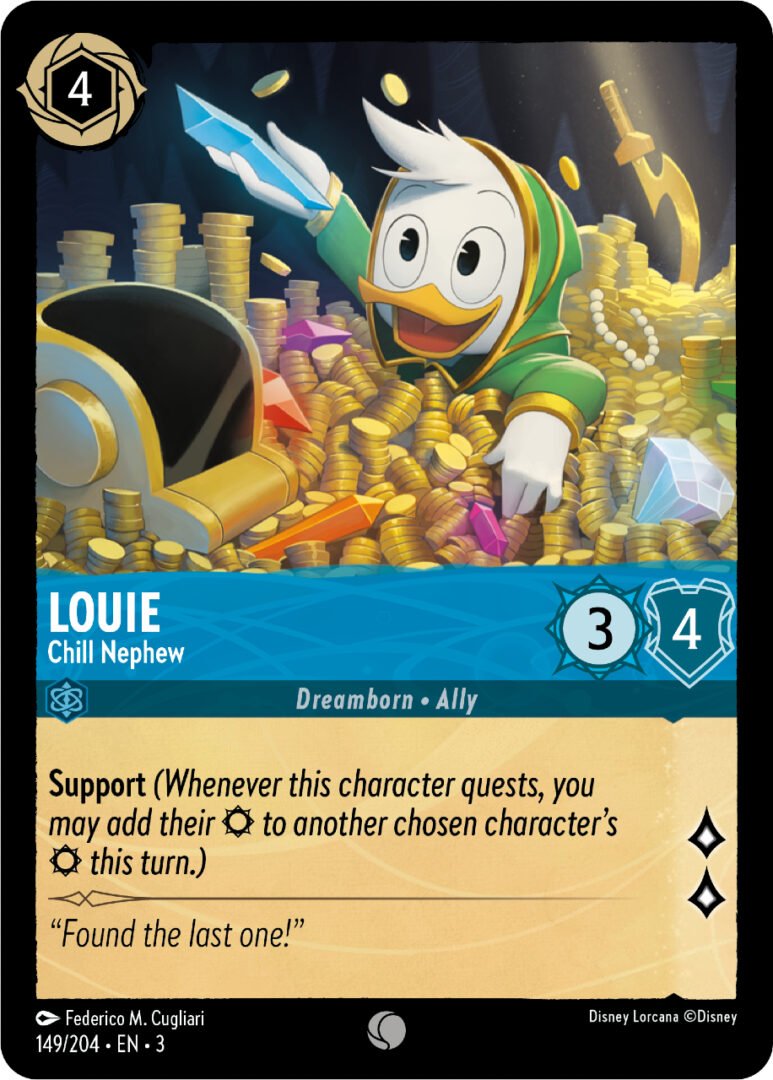
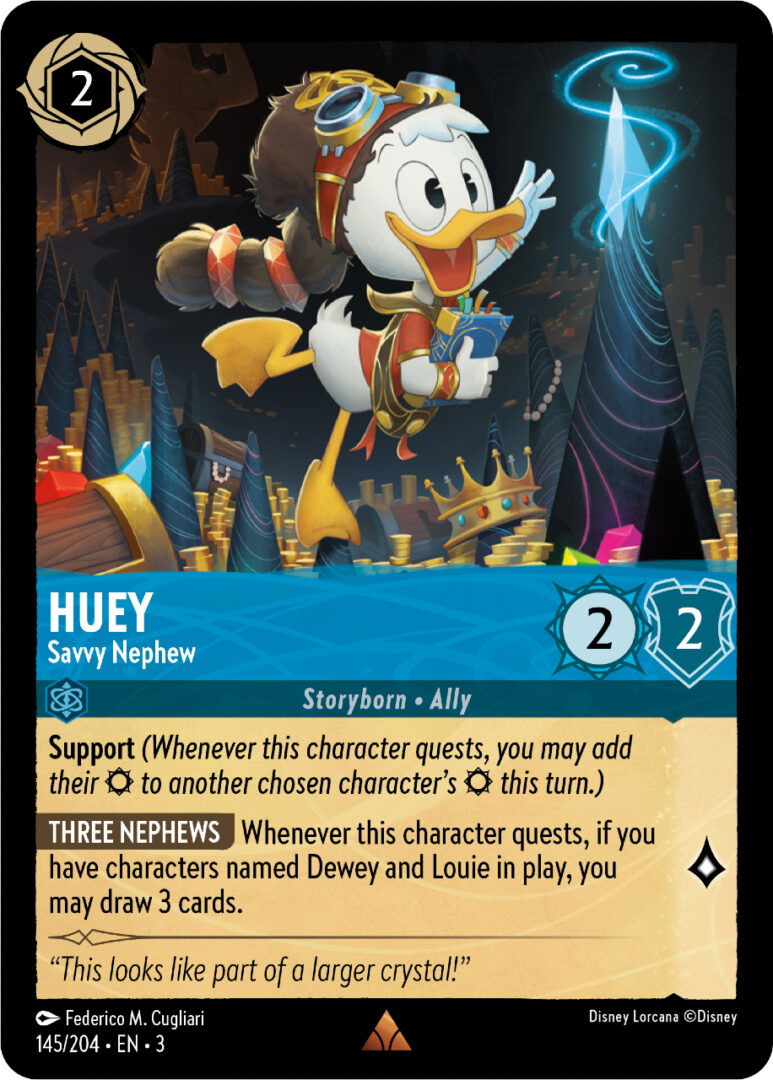

All told, I’m pretty impressed with Into The Inklands so far. The properties it’s focused on aren’t particular favourites for me, personally, but I really enjoyed the gimmicks of each premade deck. Of course, like any preconstructed TCG deck, you could stand to make some selective substitutions to strengthen it overall, especially drawing upon the rest of Disney Lorcana‘s growing card library, but the core idea of each deck option here is solid.
And for each Lorcana player like me who isn’t personally invested in Treasure Island or other franchises on prominent display here, I’m sure there’s another who’s excited to see their favourite underappreciated Disney classic showcased. So far, I’ve admired the general distribution of franchises that Ravensburger has chosen to draw from, mixing things up and utilizing the deeper corners of Disney’s literal century of storytelling.
As a long-time player of Magic: The Gathering, I also appreciate the pace at which Disney Lorcana is expanding its mechanical complexity. MTG set the bar for TCG game design 30 years ago, but veteran or returning players can sometimes feel overwhelmed by its ever-shifting array of mechanics when each new set introduces new keywords.
From what we’ve seen so far, Into The Inklands is wisely keeping Disney Lorcana‘s expansion slow. The new set changes up the fledgling game’s paradigm by introducing Locations alone; by comparison, a more complex game like MTG would throw one or two other keywords into the mix and revive a couple of older ones at the same time.
Lorcana aims to be accessible and fulfilling for players young and old, and Into The Inklands serves that goal: Locations will enrich the game’s strategy for more experienced players, but not at such an accelerated rate that young or uncertain players will be left behind. With Ravensburger planning four sets per year and following a 10-year road map, gradually deepening the strategic pool is paramount, and for now, it seems they’re proceeding at a good clip.
It really feels as though Disney Lorcana has established itself in the tabletop gaming industry and could achieve something really special for a new wave of card players.
Into The Inklands arrives at local game stores on February 23, 2024—click here to access the Disney Lorcana store locator and find an independent retailer who carries the game in your neck of the woods. Two weeks later, on March 8, 2024, the set will also be on sale at major retailers.
